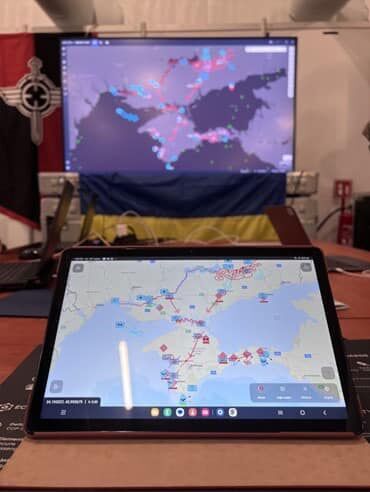
Ukraine's Delta system in use at the Coalition Warrior Interoperability Exercise 2023. (NATO)
Ukraine's progress in digital transformation (DT) has been one of the reasons behind its resilience in the conflict with Russia, and this has been due as much to cultural attitudes as technology, according to Gerard Elzinga, head of digital capabilities, NATO digital staff.
Speaking at the at the Armed Forces Communications Electronics Association's (AFCEA's) TechNet Europe 2023 conference in London, Elzinga said that Ukraine's development of digital capabilities for defence and security had been in progress for some time before Russia's invasion.
At the 2014 NATO summit in Wales, several trust funds were established to provide support to Ukraine, one of which was devoted to command, control, communications, and computers (C4). Elzinga said the aim of this was to improve Ukraine's C4 capabilities and its interoperability with NATO. It focused on some specific projects, including a regional airspace security programme; provision of commercial satellite communications (satcom); knowledge sharing including NATO standards, doctrine, and concepts; and support to the development of the Delta situational awareness (SA) system.
Elzinga observed that, at this point, Ukraine's C4 capability was rooted in the Soviet approach of centralised command-and-control (C2), with little automation of processes or SA, although he said that the border guard was an exception to this.
However, he noted that by 2019 Ukraine's DT was under way – the government had recognised its importance and in 2019 established the Ministry of Digital Transformation to oversee all DT initiatives with a “whole of government” approach. It adopted a “state in a smartphone” concept, with the aim of moving all government services online, with at least 20% automated.
Looking to read the full article?
Gain unlimited access to Janes news and more...







